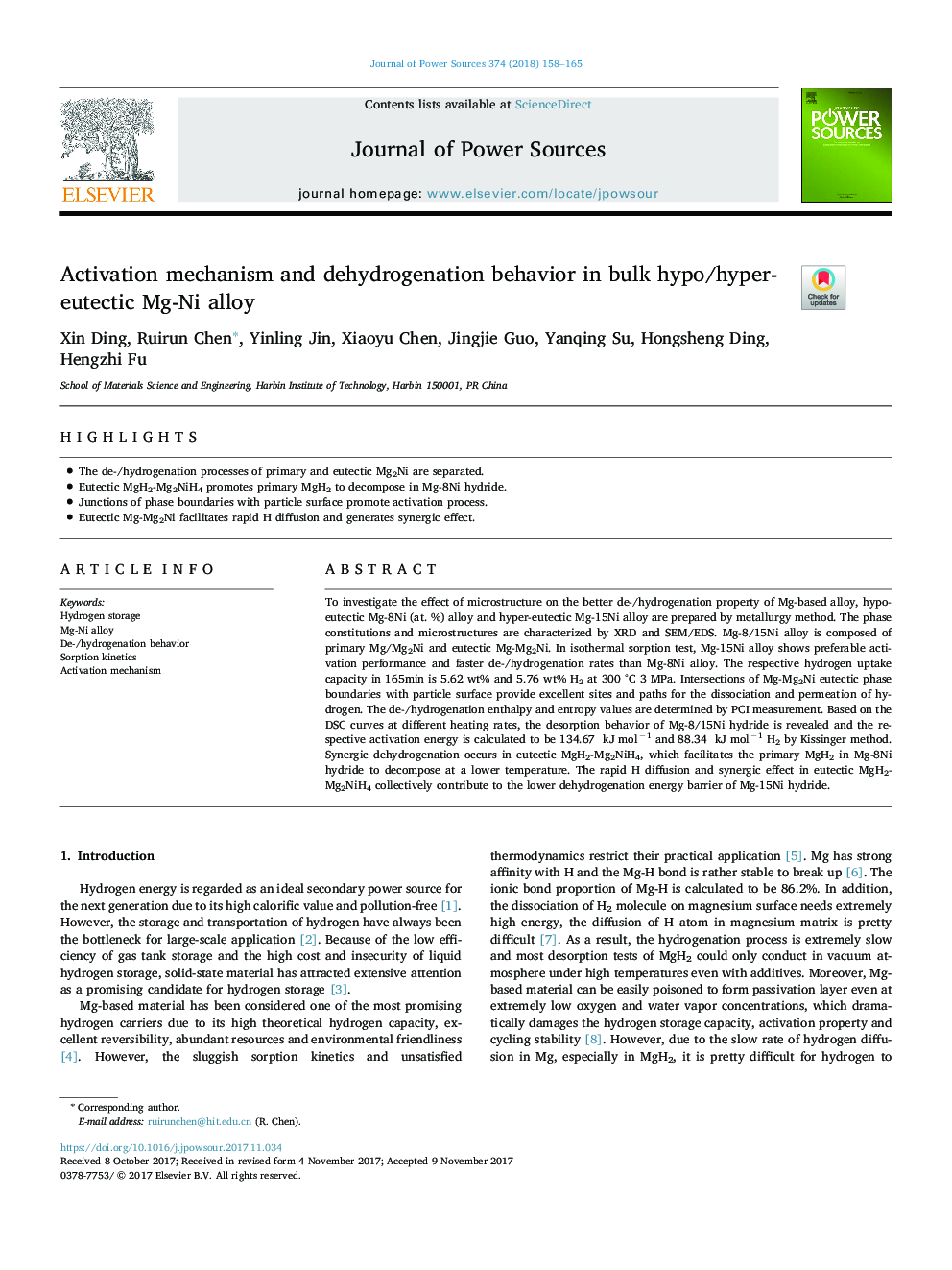| Article ID | Journal | Published Year | Pages | File Type |
|---|---|---|---|---|
| 7726438 | Journal of Power Sources | 2018 | 8 Pages |
Abstract
To investigate the effect of microstructure on the better de-/hydrogenation property of Mg-based alloy, hypo-eutectic Mg-8Ni (at. %) alloy and hyper-eutectic Mg-15Ni alloy are prepared by metallurgy method. The phase constitutions and microstructures are characterized by XRD and SEM/EDS. Mg-8/15Ni alloy is composed of primary Mg/Mg2Ni and eutectic Mg-Mg2Ni. In isothermal sorption test, Mg-15Ni alloy shows preferable activation performance and faster de-/hydrogenation rates than Mg-8Ni alloy. The respective hydrogen uptake capacity in 165min is 5.62 wt% and 5.76 wt% H2 at 300 °C 3 MPa. Intersections of Mg-Mg2Ni eutectic phase boundaries with particle surface provide excellent sites and paths for the dissociation and permeation of hydrogen. The de-/hydrogenation enthalpy and entropy values are determined by PCI measurement. Based on the DSC curves at different heating rates, the desorption behavior of Mg-8/15Ni hydride is revealed and the respective activation energy is calculated to be 134.67  kJ molâ1 and 88.34  kJ molâ1 H2 by Kissinger method. Synergic dehydrogenation occurs in eutectic MgH2-Mg2NiH4, which facilitates the primary MgH2 in Mg-8Ni hydride to decompose at a lower temperature. The rapid H diffusion and synergic effect in eutectic MgH2-Mg2NiH4 collectively contribute to the lower dehydrogenation energy barrier of Mg-15Ni hydride.
Related Topics
Physical Sciences and Engineering
Chemistry
Electrochemistry
Authors
Xin Ding, Ruirun Chen, Yinling Jin, Xiaoyu Chen, Jingjie Guo, Yanqing Su, Hongsheng Ding, Hengzhi Fu,
